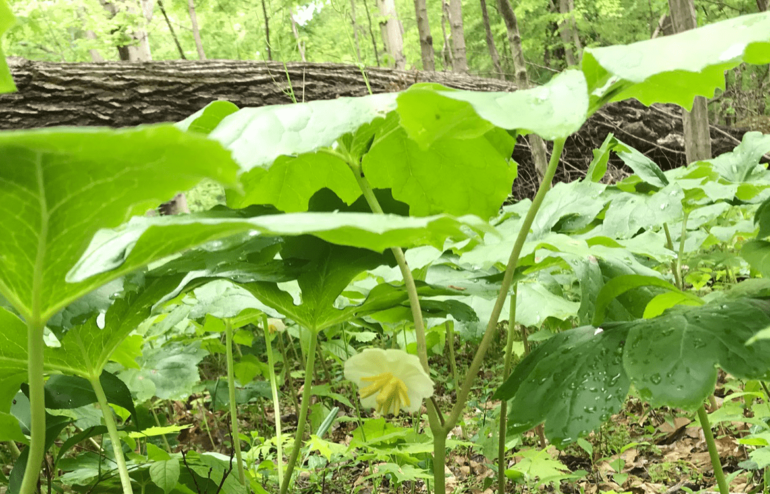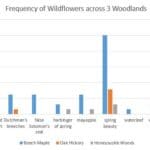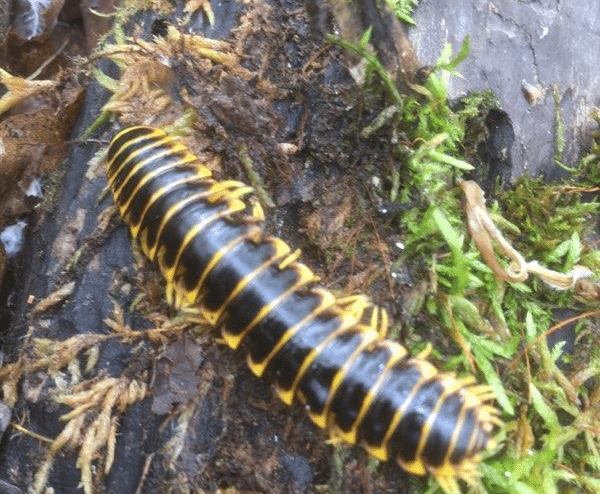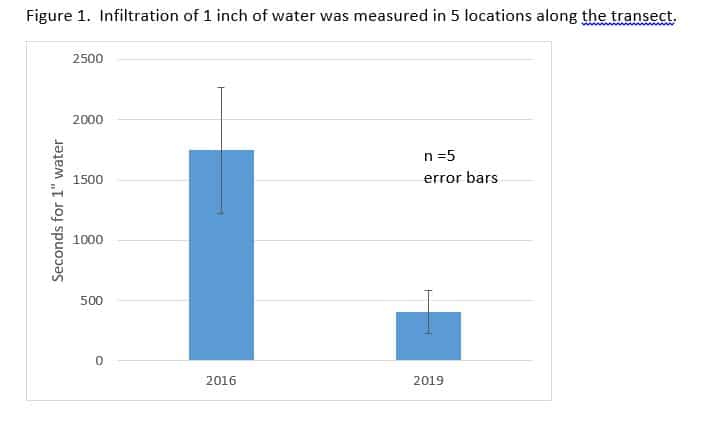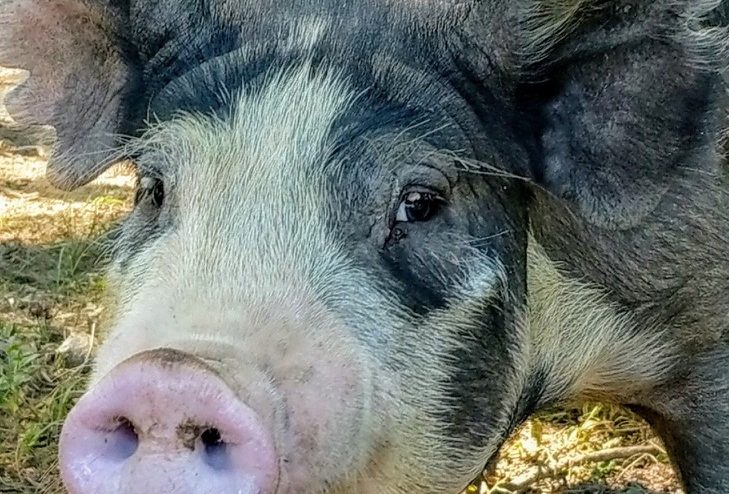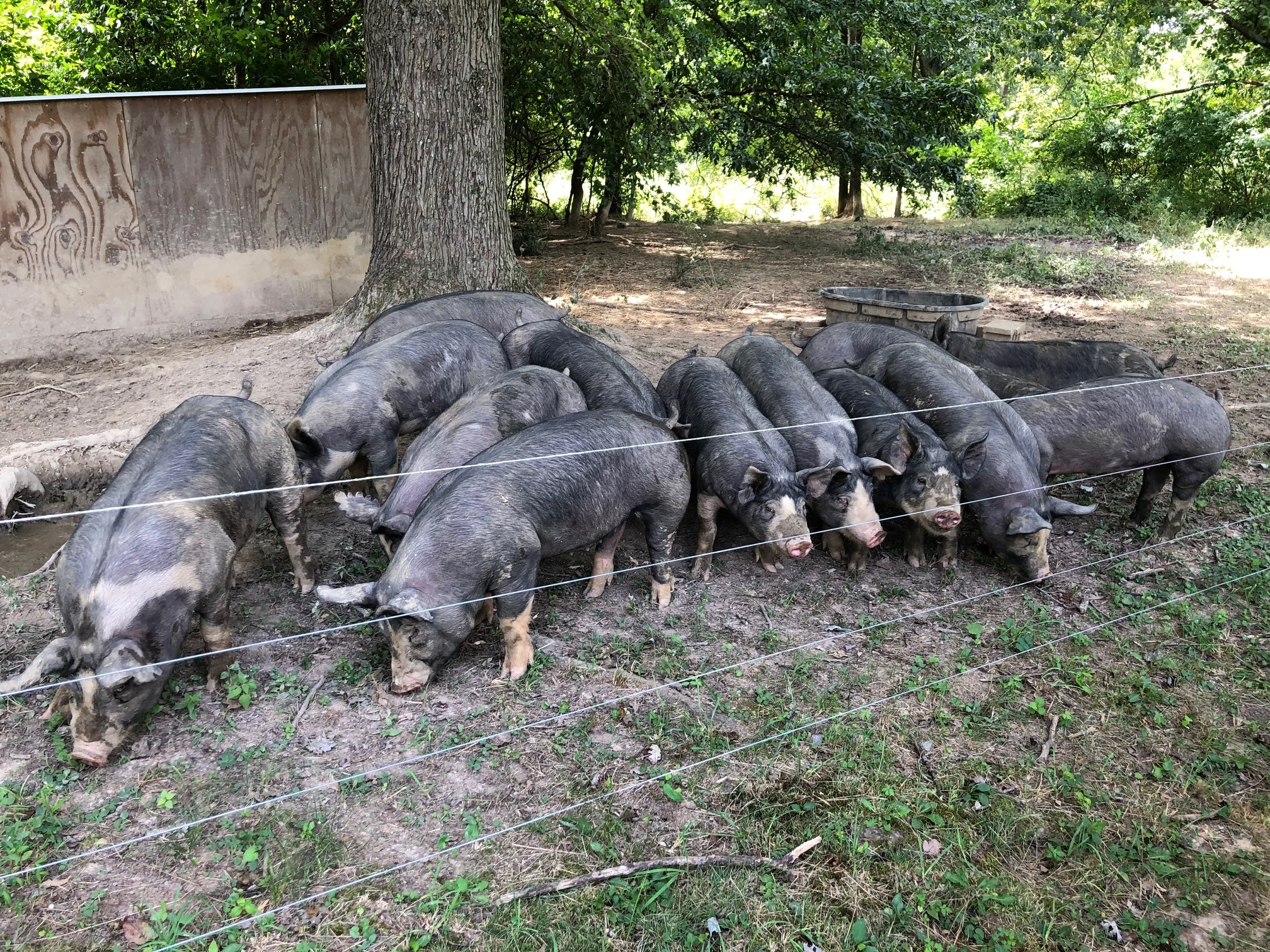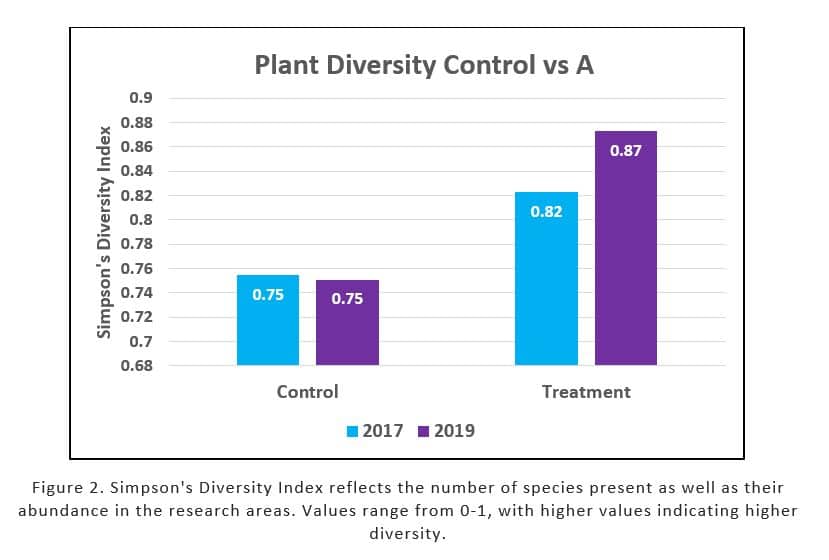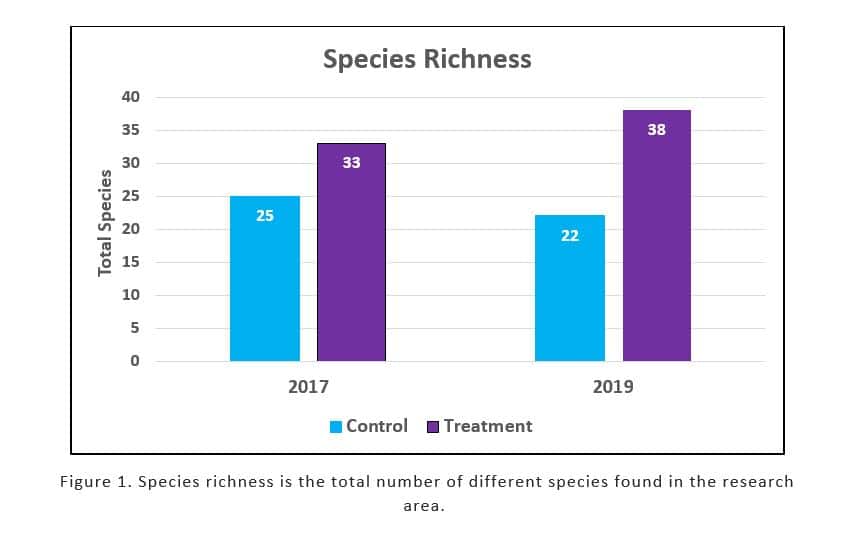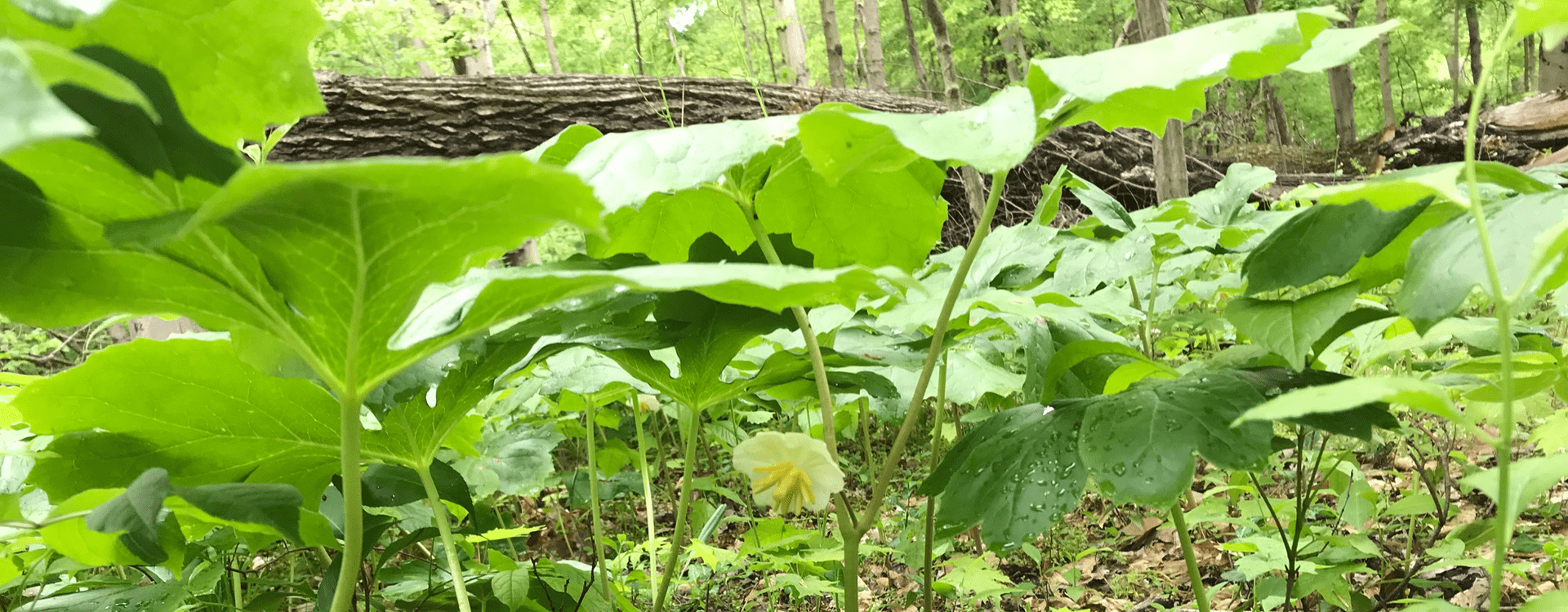
Wildflower Data
In winter we spend a lot of time indoors, analyzing data from the previous year. In 2019, we had our first opportunity to collect data on native spring ephemerals. These are native (as opposed to alien or invasive) species whose life cycle is quite short. The plants emerge, grow, flower and die generally between February and May, before trees fully leaf out. Our data show that Spring Beauty (Claytonia virginica) is the most dominant ephemeral across the woods in both frequency and density. The frequency of wildflowers across 3 of our woodland is shown in the graph.
–Jennifer

